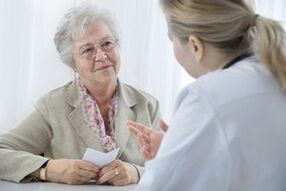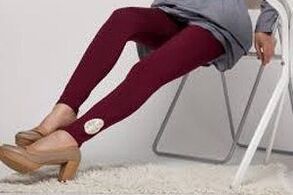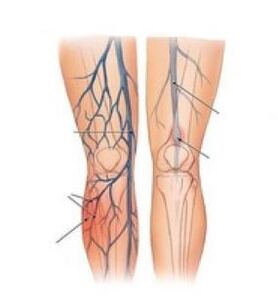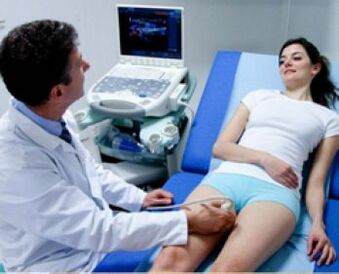Varicose veins are a common venous disease that mainly affects the legs of women. Its essence lies in the expansion or lengthening of the veins of the lower extremities, which ultimately leads to thinning of the venous walls. The disease cannot be ignored as it can lead to serious complications such as venous insufficiency of the legs, thrombosis, bleeding and gangrene.
The disease cannot be ignored as it can lead to serious complications such as venous insufficiency of the legs, thrombosis, bleeding and gangrene.
Gangrene is dangerous because if left untreated it can lead to amputation of the legs, thrombosis and even death of the patient - a detached blood clot reaches the heart, which will cause their arrest. It is imperative to treat the disease early, before complications develop.
Reasons
Scientists have proven that the predisposition to varicose veins is hereditary. If your loved ones have been diagnosed with varicose veins, it is likely to develop in you.
The following reasons can cause its development:
- hormonal disorders;
- pregnancy;
- heavy loads on the legs;
- bad habits;
- hypodynamia.
The main natural cause of varicose veins in the legs is an increased load on the vessels. The load can occur both due to physical inactivity and due to increased physical activity.  Often the office lifestyle results in varicose veins - a considerable amount of time spent sitting or standing. In this case, blood circulation is disturbed, stagnant areas are formed, which subsequently leads to vascular degradation.
Often the office lifestyle results in varicose veins - a considerable amount of time spent sitting or standing. In this case, blood circulation is disturbed, stagnant areas are formed, which subsequently leads to vascular degradation.
A poor diet also increases the risk of varicose veins. The cause of the disease can be increased consumption of fatty foods, fast food, cholesterol, caffeine. All of this negatively affects the health of the veins. Excessive physical activity is also harmful.
Pregnant women are also at risk. The physical characteristics of pregnancy interfere with adequate blood supply to the legs, which often causes the development of varicose veins. In addition to insufficient blood supply to the legs, the hormonal status of the pregnant woman changes, which can also cause illnesses. During this period, it is advisable to regularly check the condition of the legs, and in case of pain, seek immediate medical attention. Inflamed veins may disappear after the birth of a child, but as a preventive measure you can wear special draped underwear.
Symptoms
You can suspect the development of varicose veins using a variety of symptoms:
- Swelling of the legs. Reinforcement towards the end of the work day is a common feature.
- Calf pain is an early sign.
- Sudden cramps in the legs.
- Prolonged healing of wounds and bruises is a late symptom.
- Enlargement of the size of the veins, the appearance of winding paths or nodules is an early sign.
- Hair loss from the inner surface of the legs, thickening of the skin in this area is a late symptom.

An important feature of the manifestation of symptoms is their intensification in the evening, or after a long stay standing or without movement. If you find at least one symptom of the disease, it is immediately recommended to consult a doctor. The diagnosis of varicose veins is carried out by phlebologists - specialists in veins. To establish a diagnosis, a routine examination is not enough; Doppler ultrasound is necessary. If necessary, varicose veins can be confirmed using a radionuclide or radiopaque method. In this case, the distribution of the substance specially introduced into the containers will be studied.
Treatments

The prevalence of varicose veins has spurred the creation of many options for its treatment, both medical and traditional. If possible, contact your doctor who will tell you exactly how to treat you, based on your individual characteristics. It is advisable to use folk methods only in the absence of the possibility of professional treatment. They relieve the symptoms of the disease, but do not eliminate its cause.
Drugs
All drug treatments are divided into two broad groups: topical drugs and general drugs. It should be understood that drug therapy is relevant only in the early stages of the disease. In advanced cases, drug therapy is also used, only to prevent the spread of the disease.
Anticoagulants are the most popular in the treatment. They thin the blood, prevent vasodilation, which reduces the risk of blood clots. They can be taken both orally and as gels and ointments, or injections. Only the attending physician can be confident about the dosage and the choice of a specific drug. Angioprotectors help to improve vascular microcirculation, thereby eliminating the cause of the disease.
Leeches are also used to treat varicose veins. When they bite, a special natural substance, hirudin, enters the body. This dilutes the blood, which reduces the risk of blood clots. This method is less effective than medication, but for some it is the only possible solution. Treatment with leeches is cyclical.
This dilutes the blood, which reduces the risk of blood clots. This method is less effective than medication, but for some it is the only possible solution. Treatment with leeches is cyclical.
Surgical treatment
The essence of surgical treatment is to exclude or completely eliminate diseased veins from the circulatory system. Most often, such procedures are performed by injecting a special substance into the vein, which sticks to it from the inside. The most effective method, which is not dangerous to health, is the surgical removal of damaged veins. At the same time, the general condition of the circulatory system will practically not suffer. The veins that caused varicose veins on their own only pass up to 10 percent of all blood circulating in the legs. Removing them will load the rest of the veins, but will not cause significant damage to health.
Alternative treatment
It is possible to treat varicose veins with folk remedies, but at your own risk. Most of these methods are ineffective in the early stages of the disease and ineffective in later stages. Alternative treatment methods relieve the symptoms of varicose veins, but do not cure them, which is especially dangerous in advanced cases. Such a trip is dangerous for your health.

Some of the most popular folk recipes that can be used to treat varicose veins include:
- Apple cider vinegar
- absinthe;
- nettle;
- garlic.
Apple cider vinegar is able to heal the veins from the outside, relieving flare-ups even in young people. Sensitive points are treated twice a day. Vinegar is diluted in the bath, the feet are placed there for 5 minutes. After such procedures, it is advisable to let your feet dry on their own. Garlic is used as an ointment. To prepare it, one part of garlic is mixed with two parts of butter. The resulting oatmeal is applied to the affected areas of the legs overnight.
Prevention
Prevention is general and not only prevents varicose veins, but also raises the overall level of health, eliminates symptoms and, therefore, improves well-being.
Key preventive measures:
- healthy food;
- playing sports;
- absence of high loads on the veins.
Healthy eating involves the use of fruits and vegetables in the diet, especially raw. Eating nuts and seafood also has a beneficial effect on the health of the veins. In this case, you should forget about very fatty and salty foods, alcohol and products containing caffeine.
Regular exercise improves blood circulation in the legs, which has a positive effect on the health of the veins. Don't exercise too much - moderate running and cycling are great. It is important, even during sedentary work, to exercise periodically, not to let the blood stagnate. Crossed legs are contraindicated in sedentary work.
Varicose veins are a disease that is important to treat at an early stage. Don't be afraid to see your doctor at the first symptoms. Today, the treatment of varicose veins on the legs of women is not as expensive as it used to be and is not dangerous for the body. By receiving treatment in advance, you will keep your legs healthy and comfortable for many years to come.












































